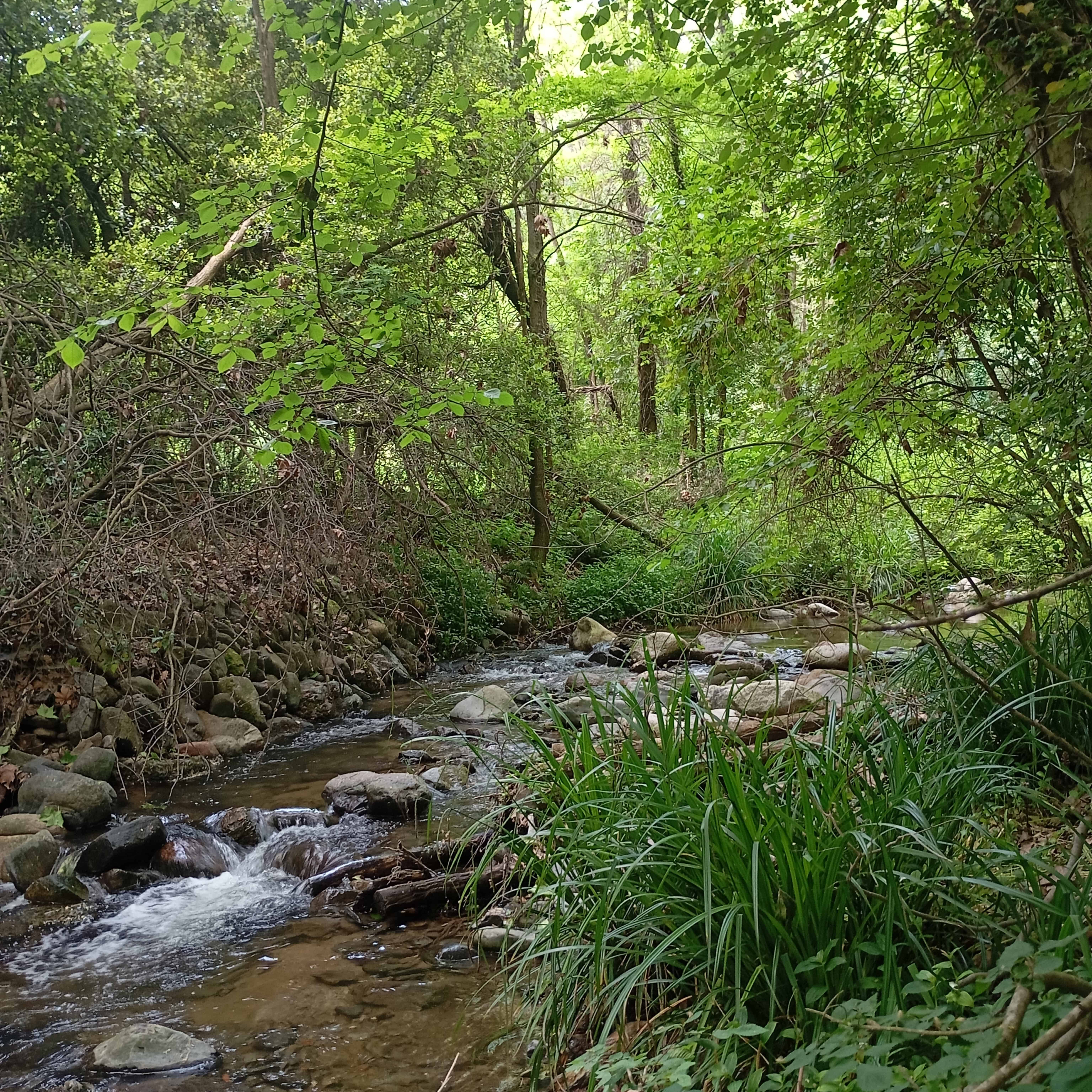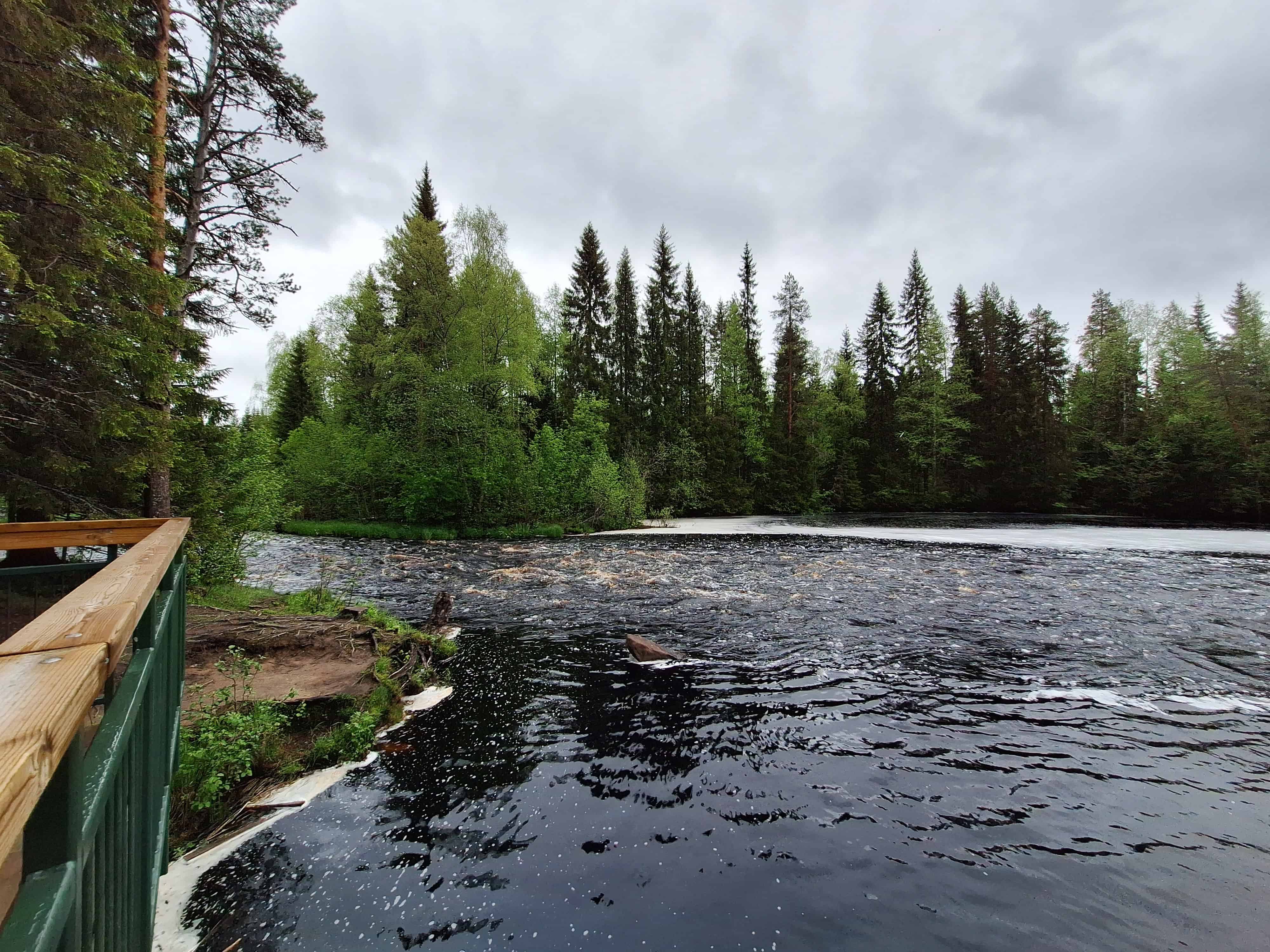Every year, World Rivers Day reminds us of the importance of rivers for biodiversity, climate resilience, and human well-being. Rivers shape landscapes, sustain ecosystems, and connect communities across the globe. At ALFAwetlands, we celebrate this day by highlighting our Living Labs, where rivers are also part of innovative research and restoration efforts.
Our Living Labs – stretching from Mediterranean streams to northern peatland valleys – show the incredible diversity of freshwater systems and the urgent need to protect them.
Example 1: The Cànoves Stream, Spain
Located in Catalonia, the Cànoves stream is a typical Mediterranean temporary stream that often runs dry in summer. Its riparian forests are home to native species such as Alnus glutinosa, Populus nigra, and Fraxinus excelsior, but also face pressure from non-native species. Seasonal changes shape the stream’s vegetation, with shrubs like Sambucus nigra and wetland plants such as Carex pendula adapting to fluctuating water levels.
One major challenge is the discharge of effluents from a wastewater treatment plant, which make up a significant part of the stream’s flow and impact water quality. Within the ALFAwetlands Living Lab site, which includes Cànoves, researchers from the University of Barcelona are testing an innovative solution: filtering WWTP effluents through riparian soils before they reach the stream. This 300 m² pilot zone allows scientists to study soil biogeochemistry and greenhouse gas emissions, exploring how to turn a problem into an opportunity for nature-based water management.

Example 2: The River Peene, Germany
The Living Lab Upper Peene Valley is located in north-eastern Germany, right in the centre of the federal state Mecklenburg Western-Pomerania.
The River Peene in north-eastern Germany is one of the last undeveloped rivers in the country. Flowing 83 km from Lake Kummerow to the Baltic Sea, the Peene is unique: with a minimal gradient of only 20 cm, it can even reverse its flow under certain conditions, creating dynamic wetland habitats.
The surrounding Peene Valley is a mosaic of shallow lakes, peatlands, reed beds, and swamp forests – one of the largest contiguous fen areas in Central Europe. It is a biodiversity hotspot, home to otters, beavers, and more than 40 mammal species, as well as rare fish like the European river lamprey. Birds of prey, including the white-tailed eagle, osprey, and lesser spotted eagle, thrive here alongside breeding colonies of terns. Rare plants and insects, such as marsh orchids and the Large copper butterfly, also find refuge in this near-natural landscape.
As an ALFAwetlands Living Lab, the Peene Valley showcases how rivers and wetlands can act as living classrooms and research hubs for biodiversity conservation, climate action, and sustainable land use.
Why Rivers Matter for Wetlands – and for Us
Rivers like the Cànoves and Peene remind us that rivers and wetlands are inseparable. Healthy rivers nourish wetlands, store carbon, regulate floods, and create habitats for countless species. In turn, wetlands help filter and store water, protect against climate extremes, and provide cultural and recreational value.
On World Rivers Day, ALFAwetlands celebrates the living rivers of as sources of knowledge, inspiration, and resilience. By supporting our Living Labs, we improve scientific-based knowledge about rivers and wetlands as thriving ecosystems for people and nature.
Explore all our Living Labs: Living Labs
Learn how to contribute to Living Lab citizen science: Become ALFAwetlands citizen scientist
Main photo: Sanginjoki river, Living Lab Finland. @Luke.

